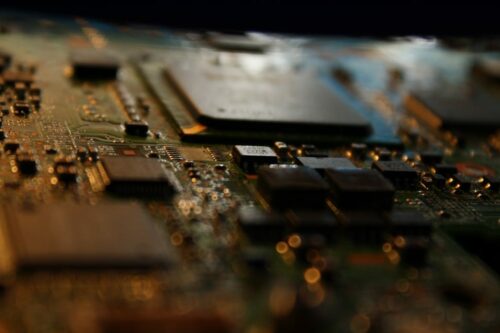Image courtesy of Creative Commons
While most chemical research takes place in laboratories, theoretical chemistry is crucial to understanding and predicting the behavior of molecules before we ever synthesize them. It often relies on computer simulations to obtain information that is difficult or impossible to measure experimentally. For example, in drug development, computational methods are used to determine if potential new drugs would be safe and effective.
Simulating large chemical systems is challenging for classical computers. The computational resources required increase exponentially with the number of particles. A water molecule takes only hours, while a protein can take several days. But researchers at the University of Oxford are exploring how quantum computers could solve these limitations. While classical computers store information in bits with fixed values of 0 or 1, quantum computers use qubits, which have some probability of having either value until they are measured. Qubits allow computers to run multiple calculations simultaneously, making them faster and more efficient, enough to facilitate simulations of complex chemical systems.
The Oxford team used clusters of classical computers to emulate a 36-qubit quantum computer, with which they were able to simulate chemical systems. “It’s like a simulation inception, a simulation inside a simulation,” said Hans Chan, a doctoral student and lead author of the Science paper detailing the group’s results. Classical computers can currently model systems with multiple different types of atoms and several electrons, but the emulation requires considerable processing power and memory, which limits the complexity of the systems it can model. Hence, the team chose two simple systems: an electron in a hydrogen-type atom, and two electrons in a helium-type atom, to provide an initial proof-of-concept. Both classical and quantum computers use quantum mechanics to describe chemical systems, but the team’s results suggest that quantum computers can provide superior results due to their efficient resource usage.
In quantum mechanics, particles and waves are a single entity. Each particle is described by a wavefunction, which contains information about its probable position and energy. The wavefunction extends over the space where a particle is moving, and the shape of this space dictates the value of the wavefunction at each point. An electron flying alone through space will have a different wavefunction than an electron living in a hydrogen atom. These wavefunctions can grow complicated for chemical systems with multiple electrons, so computers often use approximations to model them. One such approximation, the grid-based method, divides the total space into a finite number of small cubes, obtains the magnitude of the wavefunction in each small cube, and adds up these values to model the wavefunction over the whole space. “It’s like ‘pixelating’ the wavefunction. Like an image, the more pixels, the more accurate it is,” Chan said.
On a quantum computer, adding one extra qubit doubles the number of ‘pixels’ we can use to model a chemical system. Hence, we could be more efficient with physical resources while obtaining more accurate results. However, quantum computing is still a young field. A fully functional device capable of simulating chemical systems is years away. “We can only make rough estimations,” Chan said. More work is needed to fully gauge the capabilities of quantum computing, but its potential to help us solve chemical problems is already shining through.

